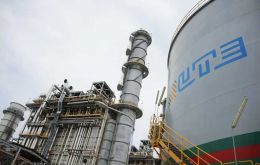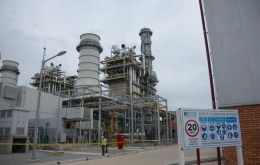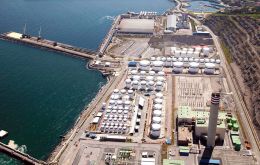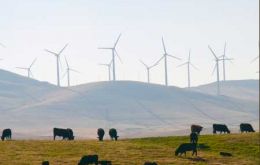MercoPress. South Atlantic News Agency
Tag: UTE
-
Friday, December 19th 2025 - 09:02 UTC
Argentine gas brings relief to electricity generation in Uruguay

Uruguay's state-owned electricity company UTE (technically the Administración Nacional de Usinas y Transmisiones Eléctricas) announced this week that importing gas from neighboring Argentina has resulted in savings of around US$3 million in the first seven days.
Add your comment! -
Monday, December 8th 2025 - 09:39 UTC
Uruguay buying Argentine gas to supply electricity plant

Uruguay's state-owned electric company, UTE, has formalized an agreement with Gasoducto Cruz del Sur to supply natural gas from Argentina, thereby significantly reducing generation costs.
-
Thursday, February 23rd 2023 - 09:40 UTC
Uruguay importing over 50% of its electricity

A report released Tuesday by Uruguay's Electricity Market Administration (ADME) showed that energy imported from Argentina and Brazil made up over 50% of the South American country's supply.
-
Monday, August 23rd 2021 - 09:10 UTC
Uruguay: Corruption allegations in failed pet project of former president Mujica

A major corruption scandal is unfolding in Uruguay with a pet project from former president Jose Mujica, which he tried to implement during his mandate, 2010/2015, but failed with accumulated losses of at least US$ 300 million.
-
Monday, June 17th 2019 - 09:55 UTC
Massive blackout hits Mercosur; Argentina and Uruguay in the dark for six hours; major investigation promised

A massive blackout left tens of millions of people without electricity in Argentina, Uruguay, Paraguay and parts of Chile and southern Brazil on Sunday. The Argentine president called it an “unprecedented” failure in the countries' interconnected power grid.
-
Tuesday, January 2nd 2018 - 07:27 UTC
New Year in Uruguay begins with a raft of goods and services price increases

New Year has taken off in Uruguay with a raft of utilities' rates increases which includes power, fuels, drinking water, telecommunications, urban bus fares, plus extra taxes on tobacco and gambling. Inflation in the twelve months to November was 6.30%.
-
Wednesday, October 7th 2015 - 02:11 UTC
Japan's Mitsui Lines takes charge of re-gasifying unit project in Uruguay

Japan's Mitsui O.S.K. Lines, Ltd. announced on Wednesday that the company has reached a basic agreement with Gas Sayago, a joint venture between Uruguay’s state oil company ANCAP and state power company UTE, to continue the floating storage and re-gasification unit (FSRU) project led by Gas Sayago and being built in Montevideo.
-
Wednesday, July 29th 2015 - 07:10 UTC
Uruguay announces controversial massive infrastructure investment program

Uruguayan President Tabare Vazquez announced on Monday a controversial plan for 12.37 billion in infrastructure investment over the next four years. Two-thirds of the investment will come from the government, Vazquez told a news conference. Where the other third was to come was not confirmed.
-
Wednesday, May 13th 2015 - 08:37 UTC
IDB 216m dollars loan for Uruguay to support construction of wind farms

The Inter-American Development Bank (IDB) continues to support the expansion of renewable energy in Uruguay through two financial packages, totaling 216 million dollars, which were approved for the private sector to finance part of the construction of the Colonia Airas and Valentines wind farms and their related works.
-
Monday, February 17th 2014 - 09:09 UTC
Uruguay's budget surplus reached 2.3% of GDP in 2013

Despite a decade of sustained growth Uruguay's fiscal deficit reached 2.3% of GDP last year, which is an improvement over 2012, when it reached 2.8%, but above the government's target of 2.1%. In money terms this means the budget red was equivalent to 1.154bn dollars, including 350 million dollar losses from government owned companies.
